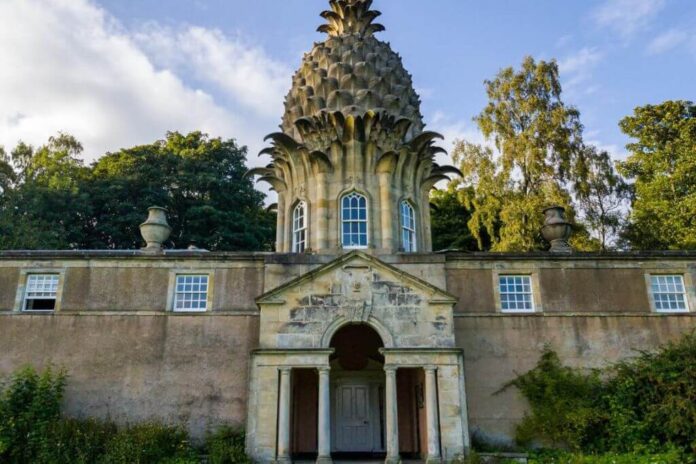People have been living in Scotland for many thousands of years, and during the course of this period, they have erected some astonishing and, in some cases, simply bizarre buildings! Seven of the most remarkable examples of architectural design may be found all over the world, from Glasgow to Shetland, and they range from gigantic crumbling mansions to stone-age houses that are still standing.
1. The Dunmore Pineapple
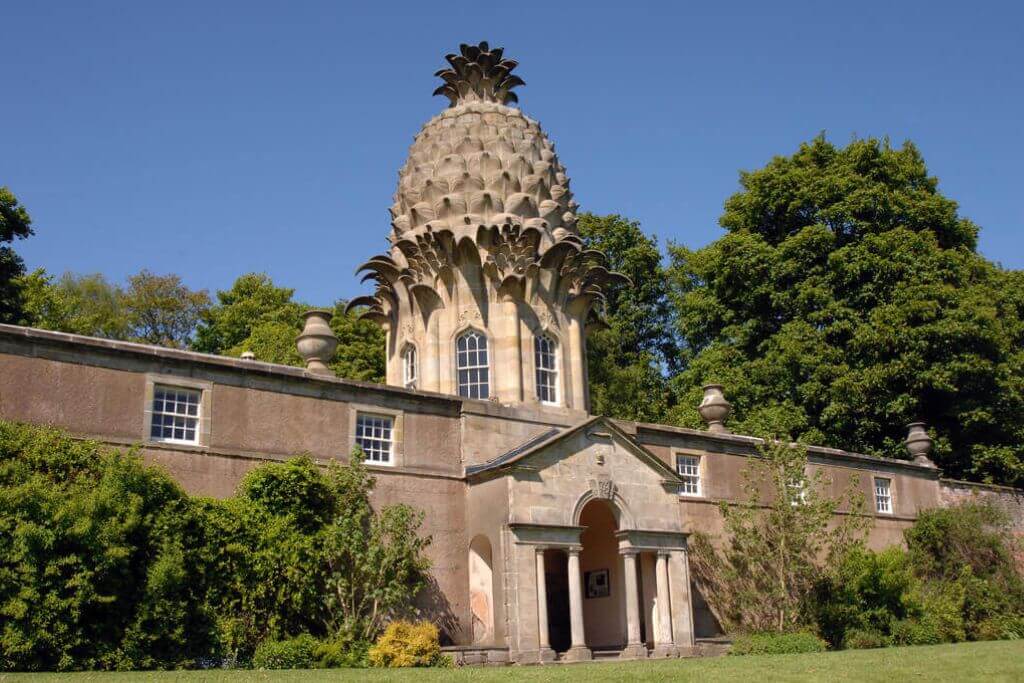
This was the summerhouse of the Earl of Dunmore, who was also the final colonial governor of Virginia. It was constructed in 1791 for him and still stands today. Pineapples were among the many kinds of fruit that were successfully cultivated within the walled gardens that encircled this peculiar house.
In 1731, Scotland became the first country in the world to cultivate pineapples. Despite the fact that this is a genuinely bizarre building, it has withstood the test of time, and there is nothing else quite like it! It is now available to rent as a vacation home.
2. Broch of Mousa
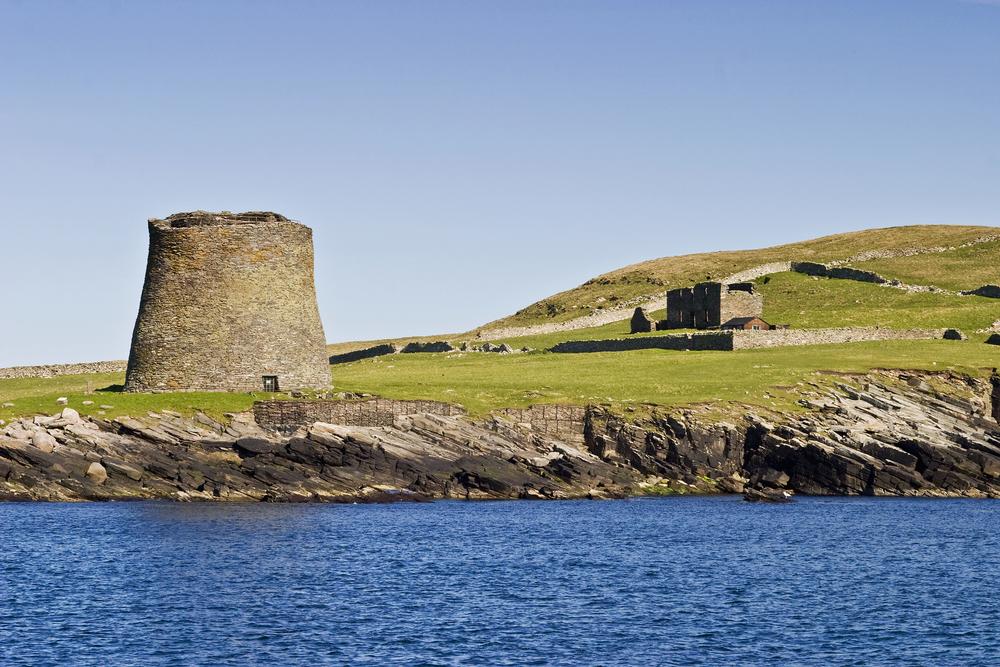
The Broch of Mousa in Shetland is the best example of this type of ancient architecture that has survived to the present day. It was constructed during the Iron Age, more than two thousand years ago, and is mentioned in two of the greatest works of Viking literature: The Orkneyinga Saga and Egil’s Saga.
Given its antiquity, the level of engineering talent that went into the creation of the structure is astounding, considering its height, which is over 13 meters (43 feet) tall. It is now inhabited by thousands of storm petrels, which have made their nests within the walls of the building.
3. Rosslyn Chapel
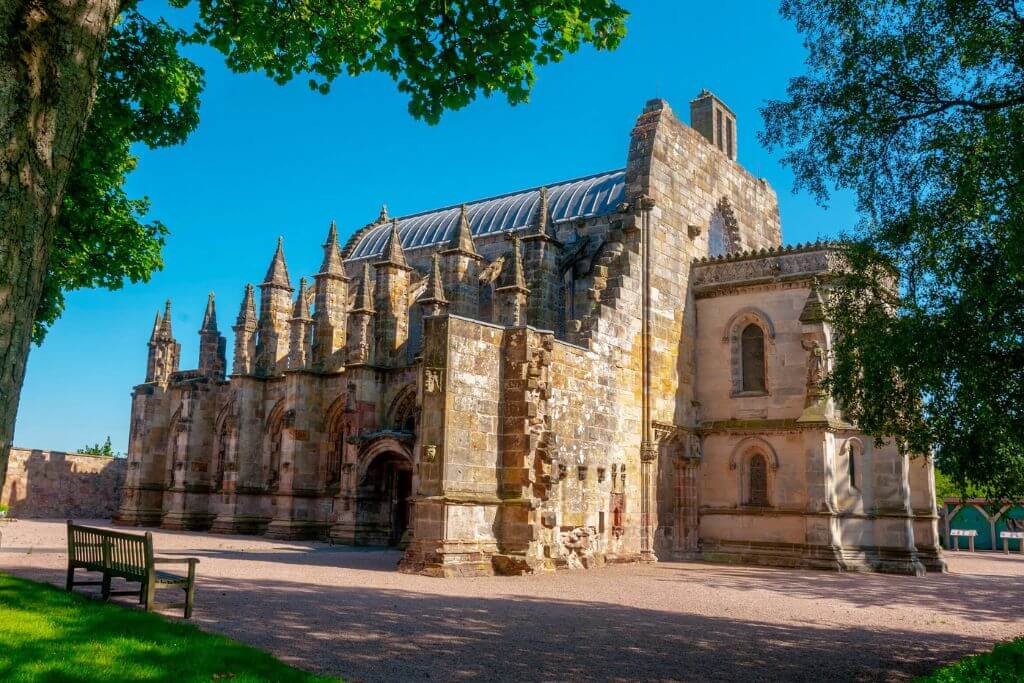
The Da Vinci Code brought a lot of attention to Rosslyn Chapel, which is a beautiful example of medieval architecture and craftsmanship. After being ordered to be constructed in the 15th century by William Sinclair, the First Lord of Caithness, and then being abandoned in 1592, the chapel gradually fell into disrepair and became derelict until Queen Victoria paid a visit and requested that it be rebuilt.
It is now a popular tourist spot that receives tens of thousands of guests annually. It should not really matter if it contains any hidden jewels or artifacts because the carvings themselves are valuable enough to be considered a treasure in their own right.
4. Castle Sinclair Girnigoe
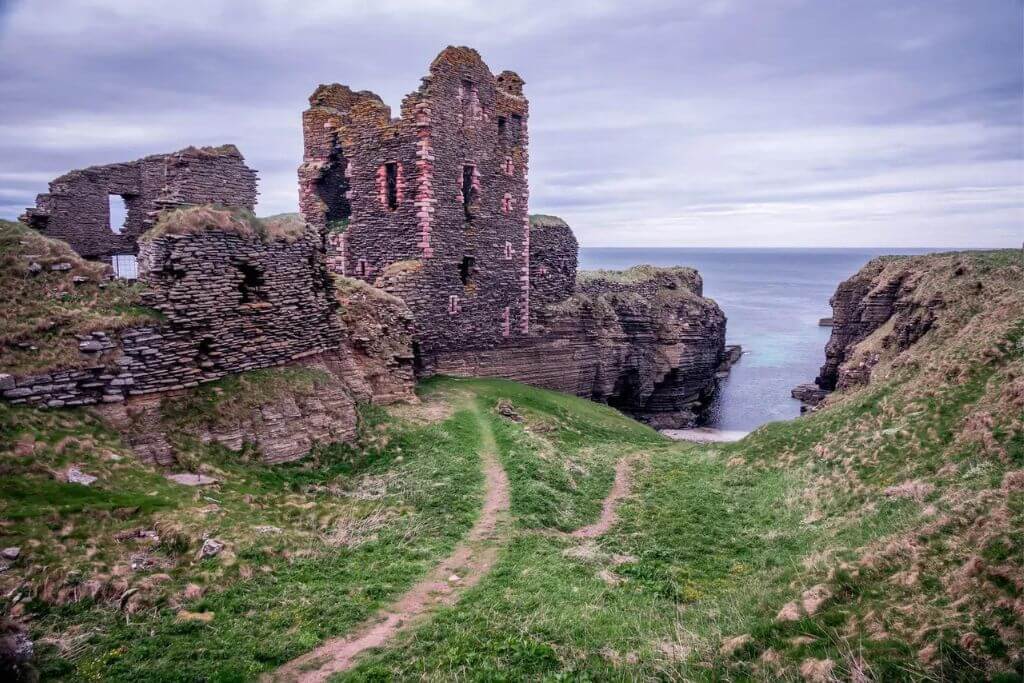
It is evident from the fact that Rosslyn Chapel is mentioned the Sinclair family has long held a significant position in Scotland. Nonetheless, their stronghold was in the county of Caithness, which is located in the extreme north of the country, and they constructed several fortified homes here.
There are no less than three castles located in the bay that bears their name: Keiss, Ackergill, and Sinclair Girnigoe, the latter of which was really comprised of two separate castles. In addition, the bay is home to an exceptional beach that is backed by dunes. The Ackergill is the only one that is a modern hotel; the others are all decaying ruins.
5. St. Peter’s Seminary
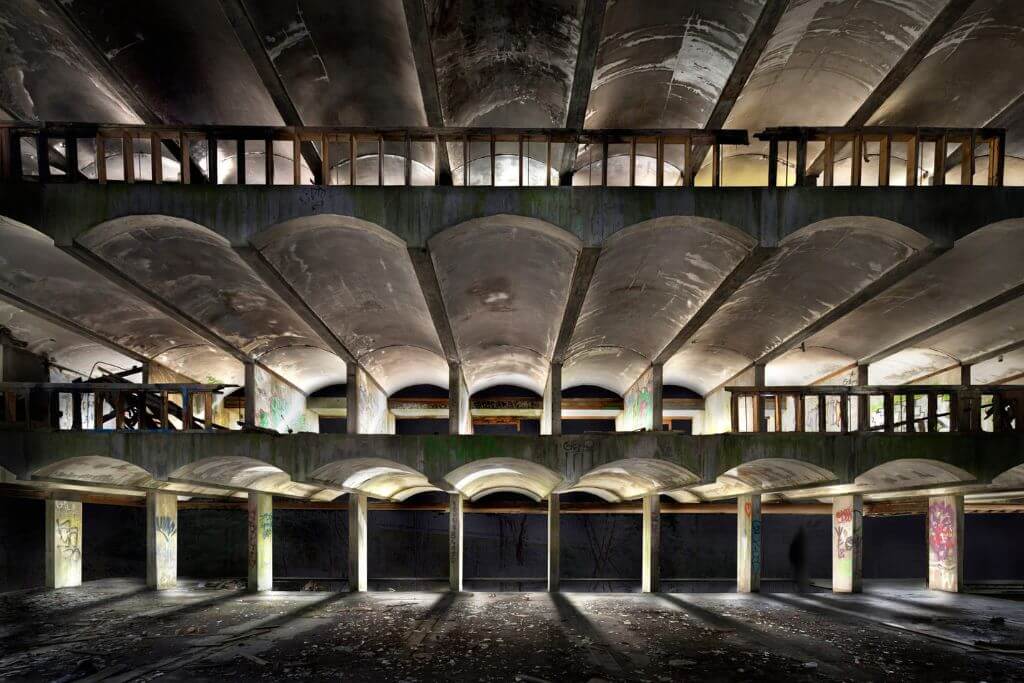
This uncompromising example of brutalist architecture was finished in 1966 and is recognized all over the world for its significance as an architectural landmark. This use did not continue past the year 1980, after which it became a home for treating drug addicts before being abandoned and swiftly collapsing into ghostly ruins.
The building was originally intended to house Roman Catholic priests in training, but this use did not last beyond that year. The concrete edifice, which is considered to be Scotland’s greatest post-war building, is the subject of rescue efforts that are currently in the works.
6. Dunalastair House
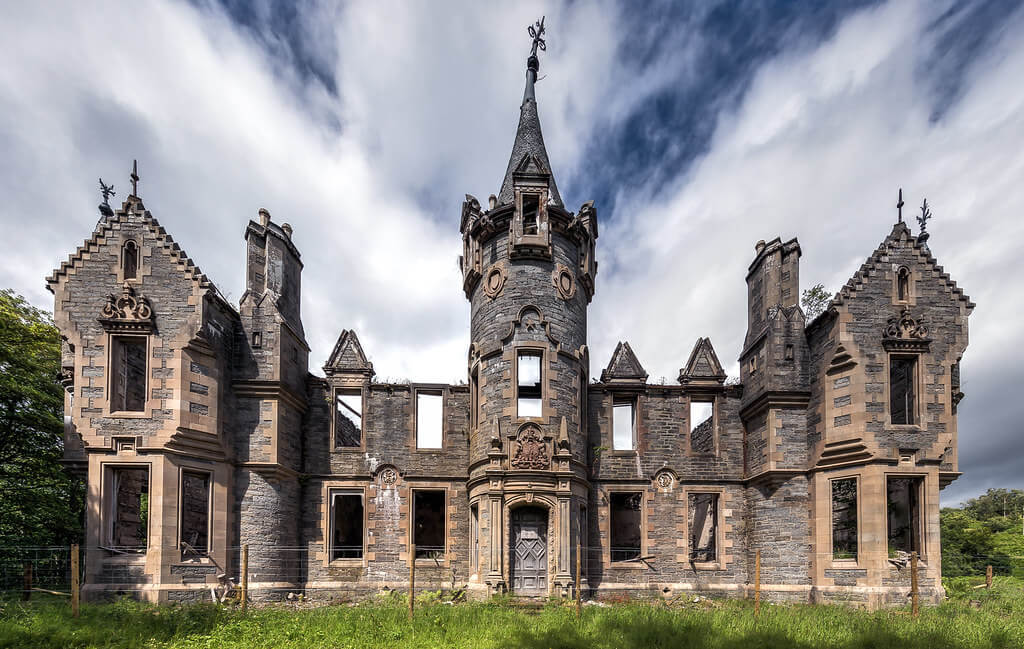
This magnificent mansion house was erected in 1862 and was located not too far from Pitlochry. It was formerly referred to as Mount Alexander. It was constructed on the site of two previous homes of the Clan Donnachaidh, both of which were destroyed by fire. After being occupied by the military for the duration of the Second World War, it was afterward put to use as a shelter for displaced people.
It was also destroyed by fire in 1952, which led to its abandonment. It is now only a shell, with birds and bats making their homes in the towers, which are slowly falling apart. The fact that there are two tiny graveyards tucked away in the woods makes the atmosphere much eerier.
7. Skara Brae
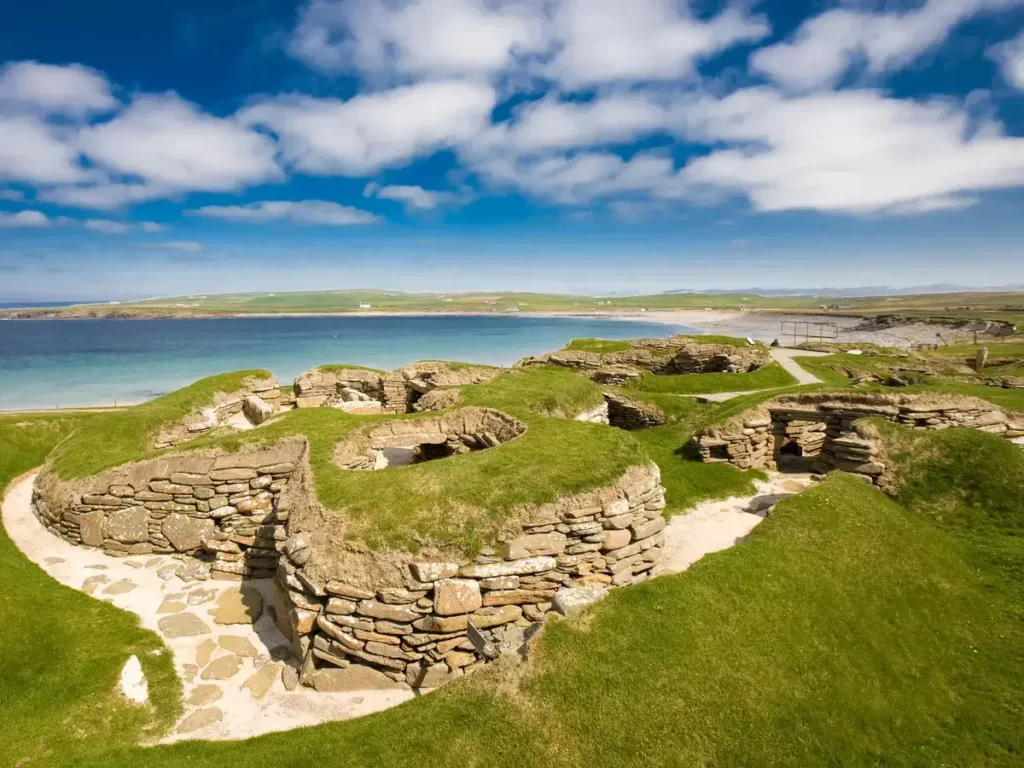
Skara Brae is older than the Broch of Mousa by more than 3,000 years, which puts its age at approximately 5,000 years when compared to the Broch of Mousa. After a storm in 1850, tonnes of sand were swept away, revealing not just one building but an entire Neolithic hamlet of eight.
This site, which is now on the list of UNESCO’s World Heritage Sites, was discovered by the globe. The level of preservation is remarkable, right down to the stone furniture, which includes beds, dressers, and even chests of drawers. It is the domestic site in Europe that is the most ancient and well-maintained. Moreover, Indiana Jones has been known to mention this location in his books and movies.
